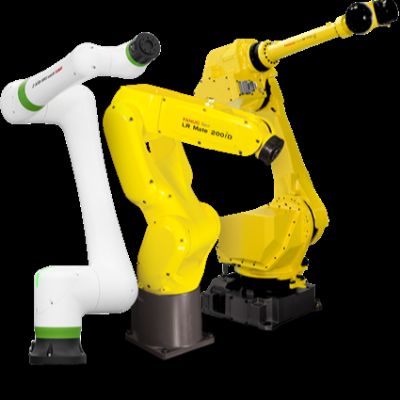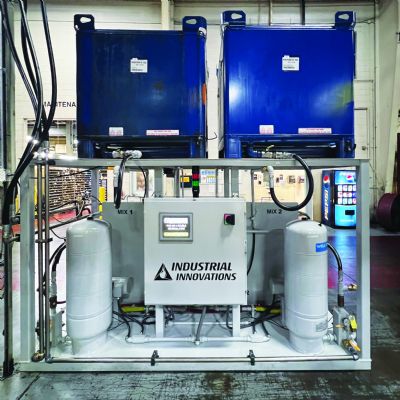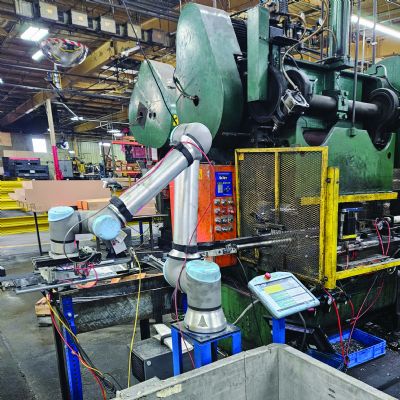Function Inline or Off to the Side
 |
| Roll coaters work on a variety of substrates, including stainless steel, and can adjust for material and coating thickness. |
A roll-coating machine can reside in the press line or off to the side. When applying a wet lubricant, the stamper typically would place the roll coater immediately in front of the press with coil or sheet feeding through the roll coater and onward through the forming operation. In dry-lubricant applications, the roll coater typically locates offline, perhaps in a nearby corner where personnel run sheet or coil through and stack it nearby. Then the coil or pallet of prelubed sheets is picked up and transported to the press for stamping.
Roll-coating machines most likely incorporate their own lube reservoirs, with several methods available for lube to be supplied to the machines. Some roll coaters incorporate a 10,000-gal. tank, 55-gal. drum or 250-gal. tote, depending on lube needs. And the machines can automatically request more lube from lube-storage tanks via sensors and controllers on the roll coaters or incorporated into press controls. That means no downtime for lube replacement.
Lube can be reclaimed as well, as some stampers create a fountain where lube pumps into a reservoir on top of the coater, and as the lube is used, excess is captured and pumped back into the reservoir.
Works Best with Proper Lubricant
Of course, a lubricant-application system functions best given the proper lube for a part run and for the method of application. With this in mind, a good application-equipment supplier should work with stampers to match the lube, job and application system.
“Our typical stamping customer will provide a part size, its lube supplier and a desired outcome,” says Weiland. “If we have experience with that particular lubrication vendor, we can be confident that our equipment can apply that lube properly. For a new lubricant or for a formulation on which we don’t have data, we process sample parts at our facility. Then we can go back to the customer and say, ‘Based on your materials, your lube and our roll coater, these are the results you can expect.’”
More than Just Lube Application
Besides lube application, roll coaters can perform other functions in the pressroom, as metalformers also find use for roll coating after forming, according to Weiland.
“Again, roll coating responds best to flat surfaces,” he says. “So preformed or nonflat surfaces usually aren’t good candidates for applying lubricant via roll coating. But you can use roll coaters on formed parts if your intent is to apply a controlled amount of material to a raised surface.
“A good example is a stamped number that goes on a telephone pole,” Weiland continues. “You can stamp it, paint it and then run it through a roll coater to coat the embossed areas, or the numbers. This often is performed in signage manufacture.” MF
View Glossary of Metalforming Terms
See also: Black Bros. Co.
Technologies: Lubrication









